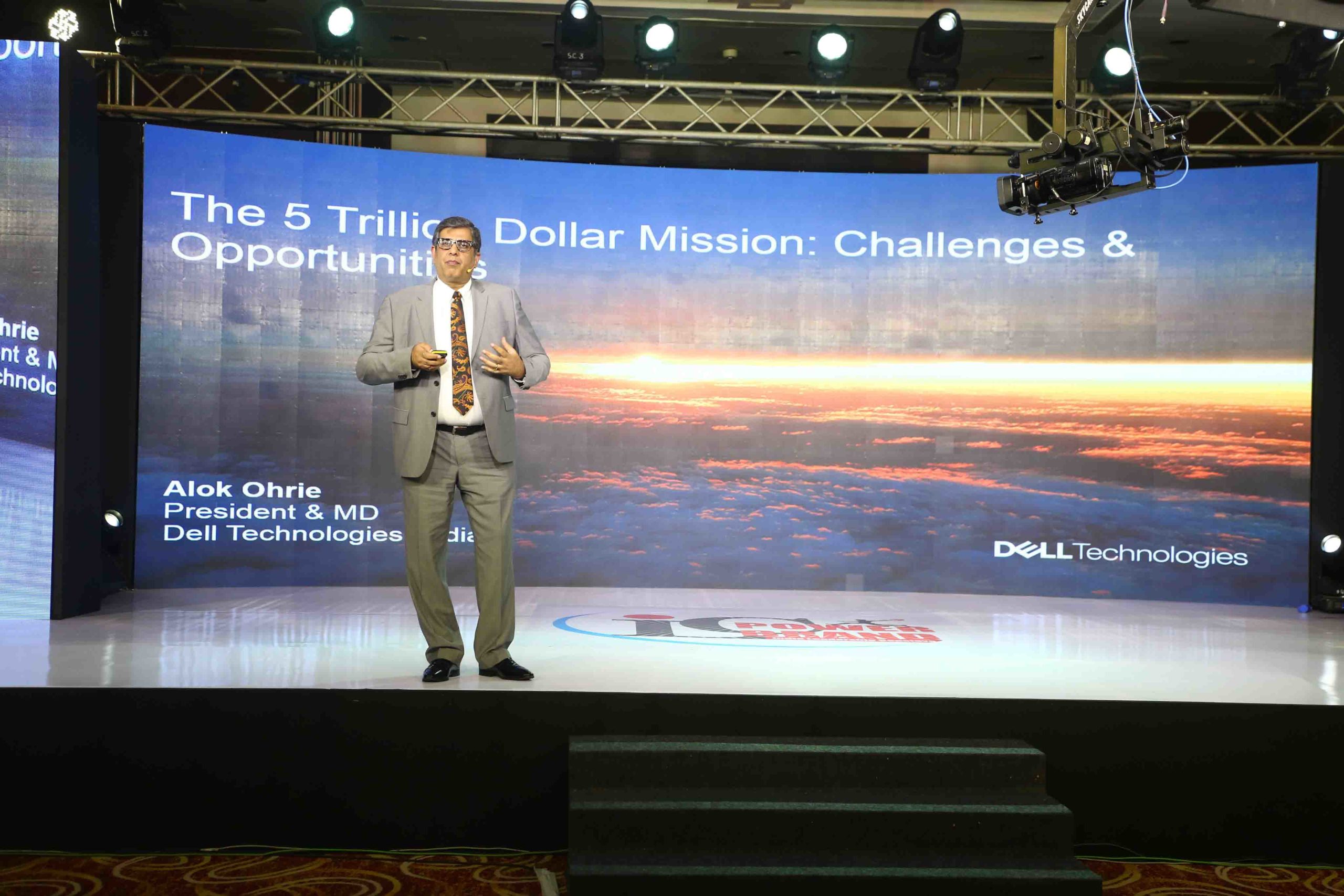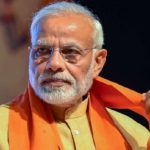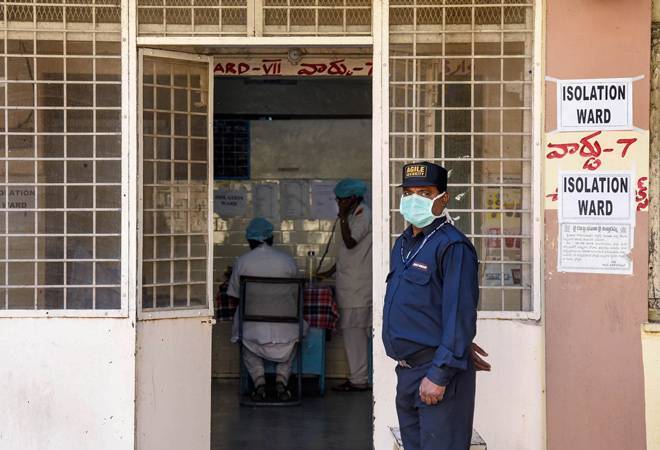The Indian government has set itself a big target, namely, that the Indian economy will have an aggregate income or gross domestic product (GDP) of $5 trillion by 2024-25. One sees this target number everywhere — touted in various government documents, including the Economic Survey, referred to in the Budget speech and, in newspaper editorials.
What is unfortunate is that there is little effort to take it beyond a slogan. It is not unusual to have politicians trying to galvanise people around slogans and banners. However, when it comes to targets and aims pertaining to the economy, it is important to have the officials and advisers go beyond the headline, to lay out the details and the road-map for the target. For international observers and particularly investors, not to see these creates doubts about professionalism.
Minimally, one needs to flesh out what the $5-trillion target means in terms of more granular indicators, such as annual growth, inflation and so on, so that we can then begin to craft policy. The translation to more basic indicators is easy to do. All one needs is pen, paper, calculator and a little patience. It is the kind of exercise which school children can do faster than adults.
Let us begin. In 2018-19, India’s GDP was $2.75 trillion. India’s latest official growth rate happens to be 4.5 per cent. We all hope that this disappointing performance will be short-lived but for the sake of basic arithmetic, let us ask how long it will take to get to the $5-trillion mark if India continues to grow at this rate. Clearly, in 2019-20, the GDP will rise to $2.87 trillion, which is $2.75 trillion plus 4.5 per cent of 2.75. Continue in the same fashion to compute the size of the GDP and it becomes clear that the target of $5 trillion will be reached not in 2024-25, but in 2032-33.
As pointed out above, this is no surprise. A target is not something that happens by business-as-usual. It is aspirational. We have to get the nation growing faster than the abysmal performance seen in recent times. So what we need to do is the reverse arithmetic. Set the target as $5 trillion dollars for 2024-25 and compute the implicit growth rate that will get us there. This turns out to be 10.48 per cent or, approximately, 10.5 per cent.
This is a hugely ambitious target. As far as I know, the only example of any nation growing for six consecutive years at an average annual rate of over 10.5 per cent was China from 2003 to 2009. China had another comparable sprint from 1991 to 1997 but there were some fluctuations then.
Can India get this rate? Right now, with India’s economy spiraling downwards, it seems not possible but let us look back at our own history. From 1947 till now, India’s economy grew at over 10 per cent only twice — in 1988-89 and 2007-8. Of these, the first may be dismissed because the previous year the economy had grown very slowly, by 3.5 per cent. So a large part of the growth in 1988-89 was a catch-up. Further, the late 1980s were a period of fiscal profligacy for which India paid a big price in 1991. Thus, from our own history, the only example from which we can learn is the remarkable growth in 2007-8, made all the more remarkable by the fact that India had been growing well for several years, starting from 2003. And from 2005, India was actually growing over 9 per cent. This was a period of professional fiscal policy and steady effort at building infrastructure. India’s economy was making big news in the international media and investment poured in. India’s investment-to-GDP rate climbed to an all-time record of 39 per cent.
There are lessons to be learned from this history, but even with that, to grow at 10.5 per cent for six consecutive years at this time is nearly impossible. For one, our investment-to-GDP ratio has crashed to 30 per cent and this takes time to re-build. If we can get back to a growth rate of 7 per cent we will be lucky.
There is one aspect of the aggregate economy that I have not talked about as yet — inflation. Virtually all serious commentators agree with me that in purely real terms, the $5-trillion target is unreachable, but maybe we can make it by a combination of real growth and inflation.
A popular argument goes like this. One way India can get to the target is if, alongside say 7 per cent growth, India has an inflation of say 3.5 per cent. Then India’s nominal GDP growth rate will be 10.5 per cent. That was the target growth. These commentators would admit that by this combination of real growth and inflation, a part of it would be the chimera of prices, but we would still get to the target figure. I have heard this argument repeatedly and by serious commentators, both among defenders and critics of government policy. But the argument is wrong.
The five trillion target is in dollar terms. Typically, if India has higher inflation than the US, the rupee would depreciate vis-à-vis the dollar to account for that. For the sake of pure arithmetic, assume US inflation is zero, India’s inflation is 10 per cent, and India’s real growth rate is 0. In that case, in rupee terms, India’s economy will grow by 10 per cent. But how much will India’s economy grow in dollar terms? The answer is zero. This is because the rupee will typically depreciate by 10 per cent to match the inflation differential, and so the larger GDP of India in rupee terms, when converted to dollars will show no growth.
It follows that we cannot get to the $5-trillion mark by supplementing the growth that falls short of 10.5 per cent with inflation, as many have argued. But this should immediately make it clear that there is another way of getting to the target. This can happen if the US dollar loses value. We can then get to the target of $5 trillion because that will mean less in real terms.
In other words, let us say we get real GDP growth up to 7 per cent per annum. Let us also assume India maintains its target inflation of 4 per cent. The only route then is to persuade Trump to get US inflation up to 7.5 per cent. This will weaken the dollar vis-à-vis the rupee by 3.5 per cent each year. In short, there are two routes: A huge policy initiative to boost real growth or the luck of a dollar depreciation.
Prime Minister Narendra Modi’s vision of making India a $5 trillion economy and a global economic powerhouse by 2024-25 was given a reality check by former Reserve Bank of India (RBI) governor C Rangarajan, who observed that achieving the target within the set deadline is “simply out of question”.
So what is the meaning of $5-trillion economy?
It basically means the size of an economy as measured by the annual gross domestic product or GDP. The GDP of an economy is the total monetary value of all goods and services produced in an economy within a year. At present, India is the sixth-largest economy in the world with $2.7 trillion economy. This, however, does not necessarily imply that Indians are the sixth-richest people on the planet. The GDP is the first and most rudimentary way to keep score among economies. If one wants to better understand the wellbeing of the people in an economy, one should look at GDP per capita. In other words, GDP divided by the total population. This gives a better sense of how an average resident of an economy might be fairing.
How is Modi govt planning to achieve $5-trillion economy?
While delivering a lecture on ‘Indian Economy: Challenges and Prospects’ at Columbia University’s School of International and Public Affairs in October, Finance Minister Nirmala Sitharaman had stated the making India a $5 trillion economy by 2024-25 is “challenging” but “realisable”. She also pointed out that more reforms are on the anvil before the end of the fiscal year.
“To become a $5 trillion economy, India’s GDP needs to go faster than what we grew at an average of 7.5 per cent in the last five years. That’s a matter of fact statement. Inflation needs to be at 4 per cent to ensure commensurate increase in purchasing power,” she said, adding that inflation in the last five years was 4.5 per cent and has been on a declining path to reach 3.4 per cent in 2018-19.
She emphasised that the fixed investment rate needs to increase from 29 per cent to 36 per cent in the course of the next five years, with some depreciation of the rupee.
In a bid to give a fillip to the economy, which has hit over six-year low of 5 per cent, Sitharaman announced a slew of measures in three dosages which include a special window for real estate, export incentives, bank consolidation and sops for micro, small and medium enterprises (MSMEs) and the automobile sector.
What are Ex-RBI Governor observations on $5-trillion economy goal?
Claiming that India will need another 22 years of sustained growth to become a “developed country,” former Reserve Bank of India (RBI) governor C Rangarajan said on Thursday that at the current growth rate, India becoming a USD 5 trillion economy by 2025 is “simply out of question.”
“People are talking about USD 5 trillion economy. Today India’s economy is about USD 2.7 trillion and we are talking about doubling this. The required rate of growth of the economy to achieve the level of USD 5 trillion by 2025 is in excess of 9 percent per annum. Reaching USD 5 trillion by 2025 is simply out of question. You have lost two years. This year it is going to be six percent growth and next year also it will be probably about seven percent. Thereafter the economy may pick up,” said Rangarajan while delivering the 7th Yasaswy Memorial Lecture organised by IBS-ICFAI Business School on the topic, “The Current Economic Situation.”
“The interesting thing is, even if you reach USD 5 trillion, the per capita income in India will grow from the current level of USD 1800 to USD 3600. Even then, India will be called low-middle income country,” said the economist who was awarded the Padma Vibhushan in the year 2002.
‘Piped dream’ if growth keeps going down: Congress
Former prime minister Manmohan Singh had said that there was no hope of Modi government’s promise of $5-trillion economy becoming a reality if growth kept going down the way it has for the last five quarters. “The country today is in the midst of a dangerously protracted slowdown. And this is something which is not the statement being made only by the Congress party people but everywhere whether you talk to people in the industry, journalists — the common theme is that the economy is going from bad to worse,” Singh had said.
“The dangerous thing about the present situation is that the government is complacent enough to not realise that we are in the midst of a protracted economic slowdown,” the noted economist had stated. He said the size of the economy was USD 2.7 trillion in the current financial year and to reach USD 5 trillion economy by 2024, the country needs a growth rate of 12 per cent by the nominal terms and 9 per cent in real terms.
“If the economy is going the way it has been going down quarter after quarter, then there is no hope that the prime minister”s promise of a USD 5 trillion economy becoming reality,” Singh said.
If we are concerned with the economic well-being of the nation, we have to focus on economic growth. Setting a target and working on a roadmap to reach it is the only way to success, and who knows this better than Prime Minister Narendra Modi. In 2014, when Modi came to power, he set up a performance matrix, which seemed far-fetched, but his tireless efforts hit the bull’s eye.
He has caught the bull by the horn on issues such as NPA, corruption, leakages and cleanliness; and effective solutions like the insolvency and bankruptcy code (IBC), GST, demonetisation, Jan Dhan accounts and Swachh Bharat Abhiyan have given confidence to the electorate that nothing is impossible — “Modi hai to mumkin hai”.
That spirit continues. For many who believe that India becoming $5 trillion economy by 2024 is a sweet dream; wait, we have the roadmap. Finance Minister Nirmala Sitharaman has unleashed it in her maiden budget. The budget is a vision document of the government. It is a major policy statement. In her budget speech, the FM said “it took 55 years for our economy to reach $1 trillion… Our economy was at approximately $1.85 trillion when we formed the government in 2014. Within five years it has reached $2.7 trillion. Hence, it is well within our capacity to reach the $5 trillion in the next few years.”
The Economic Survey has laid down the parameters for achieving this target. It has mentioned that issues like job creation, savings, consumption, demand, should not be looked at in silos. The CEA has said that with the current 7 per cent GDP growth rate, if we accelerate investments and target 8 per cent growth, the $5 trillion economy is well within sight. Investment is the key; others will follow. We will get out of the vicious circle of low liquidity, low demand, low investment, low production and lower growth to the virtuous cycle of investment, savings, production, consumption, demand and growth.
The government has continued its push for infrastructure development so that ease of living is continuously upgraded, with a focus on rural roads, waterways, and low cost housing. The Pradhan Mantri Awas Yojana alone has set a target of building 1.95 crore houses. The government has also allowed an additional deduction of Rs 1.5 lakh for interest payment of housing loans.
A lot has been announced to promote private higher education under the “Study In India” initiative, and building world class institutions and also sports universities under Khelo Bharat.
The government has also announced opening up of the sovereign debt market. Those who doubt the government’s intention can draw comfort from the fact that this will help the government swap high-cost domestic debt for cheaper international credit, thereby helping to reduce interest rates.
The banking sector has seen many reforms in last five years. Further, to help private capital formation, the government has promised Rs 70,000 crore of fresh capital infusion into public sector banks. It will also set up development financial institutions to support long-gestation projects and tackle the asset-liability mismatch. To boost consumption and resolve the NBFC issues, the government has guaranteed 10 per cent of loss on assets pool purchases to the tune of Rs 1,00,000 crore from NBFCs.
At present, the private sector is largely over-leveraged, and is under pressure to resolve its debts and is short of capital. For capital formation, the government has to depend on foreign capital and, therefore, is continuing with its policy of liberalising FDI, particularly into insurance, aviation and single brand retail segment.
MSMEs have also has received special allocation by the government; to support manufacturing, the government has announced streamlining 55 labour laws into four codes and enhancing minimum wages. Small traders with turnover up to Rs 1.5 crore will get the benefit of a pension scheme.
The government has reduced the corporate tax to 25 per cent for small enterprises with a turnover up to Rs 400 crore, and has announced several measures to boost the start-up ecosystem. To continue with the benefits of this provision, it is expected that it will not be misused by the beneficiaries as is done at times under capital gains tax, dividend distribution tax and buy-back of shares.
Modernisation of railways is estimated to require about Rs 50 lakh crore of investment. The government has proposed public private partnerships and selective route privatisation to augment its resources. Initiatives like building a national power grid and a warehousing grid will have far-reaching benefits.
For ease of doing business, tax compliance is crucial. The government’s plan to implement e-assessment is a big game changer: It will bring transparency and reduce harassment of tax payers due to subjective human intervention.
The government’s initiative in resolving pending indirect tax litigation through Sabka Vishwas Legacy Dispute Resolution Scheme is commendable. This scheme covers, past disputes and provides relief ranging from 40 to 70 per cent, and also relief on levy of interest and penalties.
With all the constraints on expenditure, the finance minister has allocated funds across various social segments. The budget has increased funds allocated to central sponsored schemes by 8.8 per cent to Rs. 3,31,610 crore. The total expenditure of the government has increased by 13.4 per cent from the revised estimates. The fiscal deficit has been kept under check at 3.3 per cent of GDP. The budget meets the demand for investment and growth without disturbing the fiscal math.
It is not redistribution but growth that matters. The prime minister has rightly said that we have to increase the size of the cake. Economic growth is our target and the focus on empowerment of the weaker sections of the society though education, healthcare etc is the solution.


















